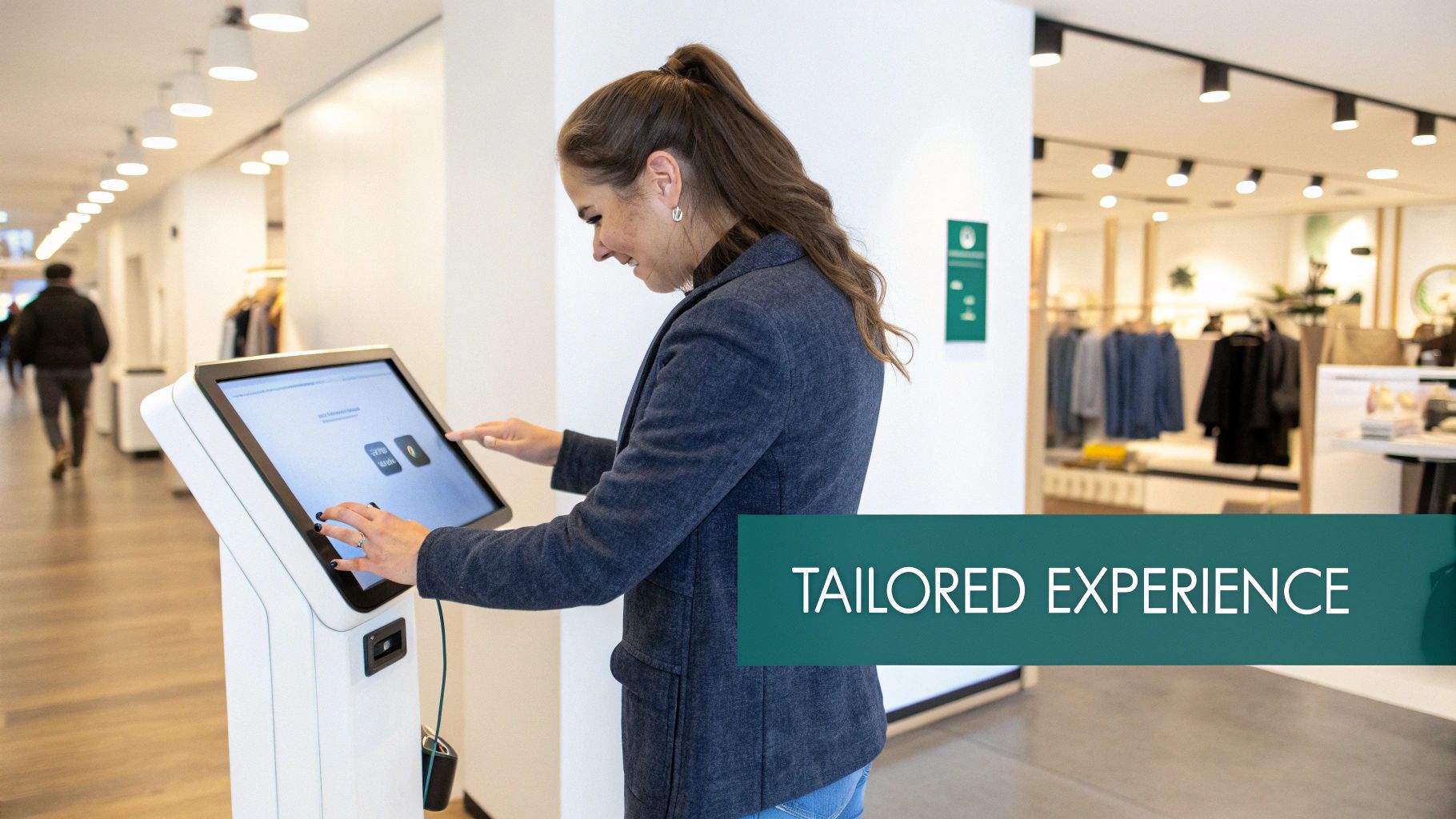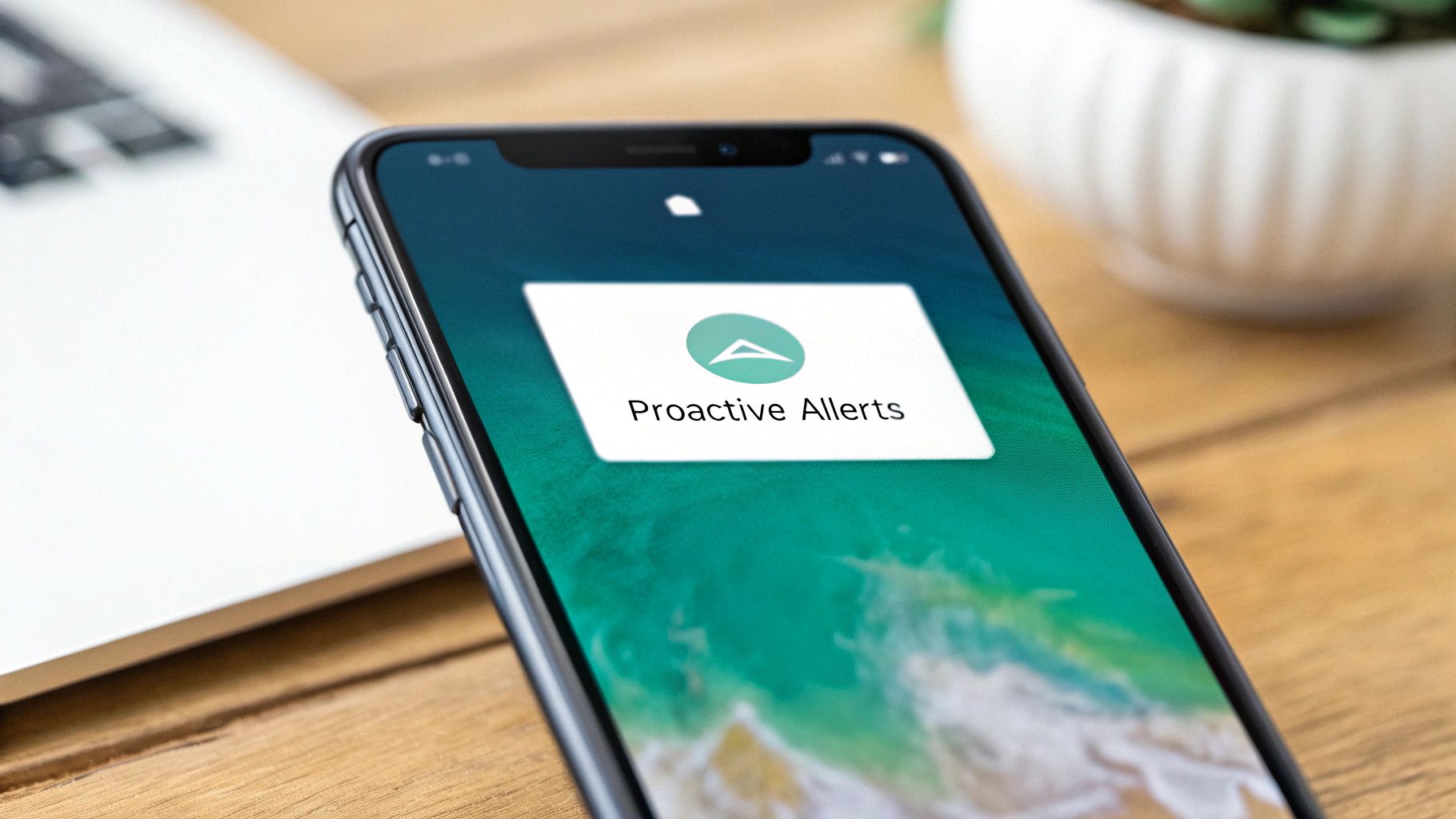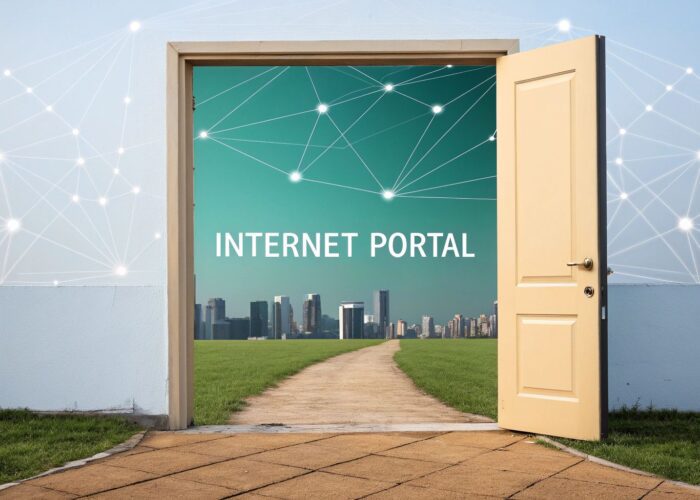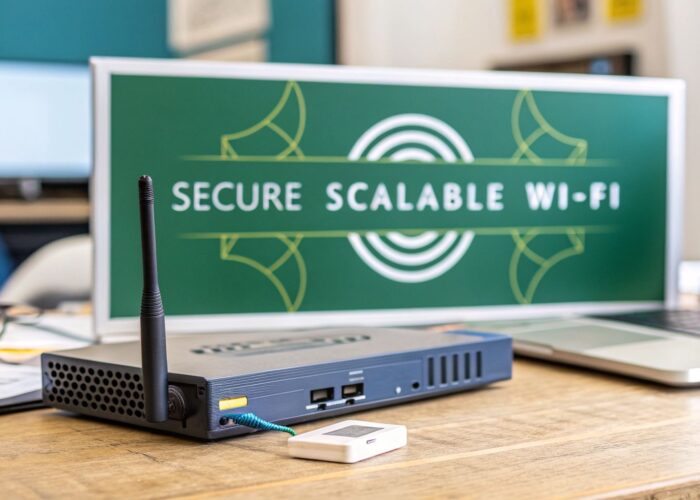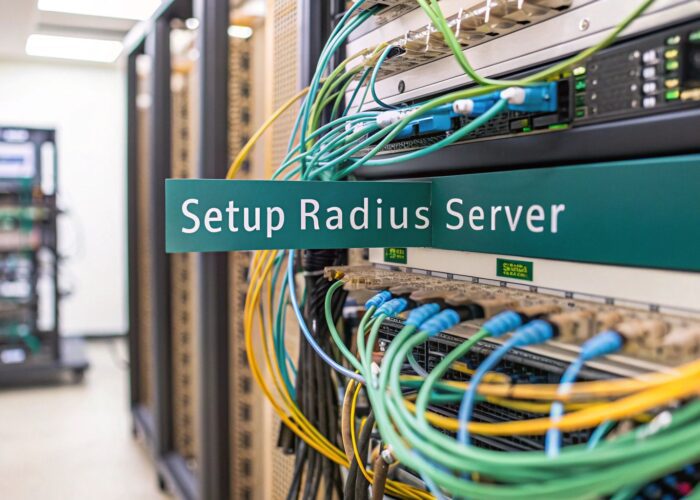Hey there! Ever wondered how that free Wi-Fi in your favorite coffee shop or university campus seems to know just what you need? It's not magic; it's smart technology working behind the scenes. In today's hyper-connected world, especially in sectors like retail, education, and corporate environments with Bring Your Own Device (BYOD) policies, simply offering internet access isn't enough. The real game-changer is turning that connection into a meaningful conversation.
This is where modern authentication solutions, particularly those powered by robust systems like Cisco and Cisco Meraki, come into play. Using tools like captive portals, businesses can do more than just grant access; they can create personalized, secure, and engaging experiences. We're talking about everything from easy, secure logins with Individual Pre-Shared Keys (IPSK or EasyPSK) to gathering valuable insights that help tailor services. To truly supercharge your customer engagement, exploring various effective solutions is key. For those focusing on online retail, a deep dive into customer engagement solutions for e-commerce growth can provide powerful, platform-specific strategies.
In this guide, we’ll explore 10 essential customer engagement best practices, showing you how leveraging your Wi-Fi infrastructure can transform a simple login into a powerful tool for building lasting relationships. We'll move beyond generic advice to provide actionable steps for implementing strategies across various channels, from personalized mobile experiences to optimizing your loyalty programs with data-driven insights. Get ready to learn how to connect with your customers on a deeper, more effective level.
1. Personalized Customer Experiences
Gone are the days of one-size-fits-all marketing. Today, creating truly personalized customer experiences is a cornerstone of effective customer engagement best practices. This approach involves tailoring every interaction, from communications to special offers, based on individual customer data, behaviors, and preferences. It's about making each person feel seen, understood, and valued, transforming a generic visit into a memorable, relevant moment.
This level of personalization is powerfully demonstrated through smart Wi-Fi captive portals. When a guest connects, you can go far beyond a simple login page. Imagine a retail shopper connecting to your store's Wi-Fi and instantly seeing a welcome message with a coupon for a brand they previously browsed. In an education setting, a student could connect to the campus network and receive a targeted notification about an upcoming event relevant to their major.
How to Implement Personalization
This strategy is highly achievable using captive portals powered by solutions like Cisco Meraki. These platforms can securely collect user data (with consent) and integrate with your existing marketing tools to deliver these tailored experiences. This turns the simple act of connecting to Wi-Fi into a dynamic engagement opportunity. For environments with diverse user roles like corporate BYOD or university campuses, solutions like Identity Pre-Shared Keys (IPSK) provide secure, role-based network access while enabling targeted communications for different groups.
Actionable Tips for Success
- Start with Segmentation: Before diving into one-to-one personalization, group your audience into segments (e.g., new vs. returning visitors, students vs. faculty).
- Prioritize Privacy: Always be transparent about the data you collect and how you use it. Gaining and maintaining customer trust is crucial.
- Use Progressive Profiling: Don't ask for everything at once. Gradually collect information over multiple Wi-Fi sessions to build a richer customer profile over time without overwhelming the user.
- Leverage Integrations: Connect your Wi-Fi authentication platform with CRM or marketing automation systems to create seamless, data-driven campaigns. You can explore how leading Wi-Fi platforms integrate with technology partners to unlock these capabilities.
2. Omnichannel Customer Support
True customer engagement best practices extend beyond marketing to every touchpoint, especially support. An omnichannel approach provides seamless, integrated customer service across all your channels, from in-person interactions to digital platforms. This ensures that a customer can start a conversation on social media, follow up via email, and even connect to your guest Wi-Fi for in-person help without losing context or having to repeat themselves. It’s about creating one continuous, unified conversation.
This unified experience is all about making life easier for your users, and it builds incredible loyalty. For example, a retail brand might integrate its online, mobile, and in-store services, allowing customers to move between digital and physical shopping effortlessly. Your Wi-Fi network, often the first digital touchpoint on-premise, can be a powerful hub in this strategy, connecting the physical and digital worlds seamlessly.
How to Implement an Omnichannel Strategy
The foundation of an omnichannel strategy is a centralized data platform. By connecting your Wi-Fi authentication solution, powered by vendors like Cisco Meraki, with your CRM, you can recognize customers as they connect on-site. For example, a student returning to a campus library could connect to the Wi-Fi and receive a notification directing them to the IT help desk for an issue they previously reported online. In corporate BYOD environments, this ensures employees have a consistent support experience, whether they are working remotely or connecting in the office.
Actionable Tips for Success
- Invest in a Centralized System: Use a robust CRM or ticketing system as your central hub for all customer interactions and data.
- Train Staff Comprehensively: Your team must be skilled in handling inquiries across every channel and understand how to maintain a consistent brand voice.
- Establish Clear Escalation Paths: Create clear procedures for moving a customer issue from one channel to another without losing information, such as from a Wi-Fi captive portal chat to an in-person tech.
- Synchronize Customer Data: Regularly update and sync customer profiles across all systems to ensure every team member has the most current information, improving service quality and engagement.
3. Proactive Customer Communication
A key pillar of modern customer engagement best practices is shifting from a reactive to a proactive communication model. This means anticipating customer needs and initiating contact before they even think to reach out. By addressing potential issues, providing timely updates, and offering relevant information upfront, you show a deep commitment to the customer experience, fostering trust and loyalty while making everyone's life easier.
This strategy is particularly effective in environments with captive portal Wi-Fi. For instance, a university can use its Cisco Meraki network to send an automated alert to students connecting on campus about an upcoming system maintenance window that might affect online library access. Similarly, a retail store can inform connecting shoppers about a last-minute change in store hours for an upcoming holiday, preventing frustration and managing expectations effectively.
How to Implement Proactive Communication
Implementing this requires leveraging data and automation through your Wi-Fi authentication solution. When a user connects, their device, location, and user group (e.g., student, staff, shopper) can trigger specific, pre-scheduled messages. In a corporate BYOD setting, you could use Identity Pre-Shared Keys (IPSK) not only for secure access but also to push a targeted message to the marketing department about a critical software update, ensuring they are prepared. This transforms your network from a simple utility into a powerful communication channel.
Actionable Tips for Success
- Identify Communication Triggers: Use analytics to pinpoint common issues or questions. For example, if many users inquire about event schedules, proactively display the schedule on the Wi-Fi login page.
- Segment Your Messaging: Avoid sending mass messages. Tailor communications to specific user groups, such as informing hotel guests about pool maintenance or retail employees about a new security protocol.
- Provide Clear, Actionable Info: Ensure your proactive messages are concise and tell the user exactly what they need to know or do. Vague alerts create more confusion than they solve.
- Manage Communication Frequency: Be helpful, not intrusive. Monitor user engagement and feedback to find the right balance, and allow users to manage their notification preferences where appropriate. Discover how this approach can dramatically reduce help desk tickets by resolving issues before they are reported.
4. Value-Driven Content Marketing
Effective customer engagement best practices extend beyond direct interactions and into the realm of content. Instead of just pushing promotional messages, this strategy is all about creating and sharing valuable, relevant, and educational content. It directly addresses customer pain points and interests, building trust and establishing your brand as a helpful expert, which nurtures long-term relationships far more effectively than a simple sales pitch.
This approach positions your brand as a helpful resource rather than just a vendor. For example, a corporate IT department could offer guides on secure BYOD practices, or a university could provide content on study habits and career planning. This is where your Wi-Fi network becomes a brilliant content delivery channel. Using a captive portal, you can offer this valuable content directly upon login, turning a routine connection into an opportunity for meaningful engagement.
How to Implement Value-Driven Content
Your Wi-Fi authentication platform is the perfect launchpad for your content marketing. When a user connects via a Cisco Meraki powered captive portal, you can present them with links to helpful blog posts, video tutorials, or downloadable guides relevant to their context. Imagine a retail shopper connecting and getting a link to a "Top 10 Fashion Trends for Spring" guide, or a hotel guest receiving an insider's guide to local attractions.
This strategy enhances security and segmentation. By using solutions like Identity Pre-Shared Keys (IPSK), you can ensure secure access for different user groups (e.g., students vs. faculty, corporate employees vs. guests) while delivering content specifically tailored to each group's needs and interests, making the information even more valuable.
Actionable Tips for Success
- Align Content to the Journey: Create a content calendar that maps specific pieces of content to different stages of the customer journey, from initial awareness to long-term loyalty.
- Understand User Needs: Conduct simple surveys or analyze browsing data (with consent) to understand what information your audience is truly looking for.
- Repurpose and Distribute: Repurpose a single piece of content, like a research report, into blog posts, infographics, and short videos to maximize its reach across different channels.
- Encourage User-Generated Content: Feature testimonials, reviews, or user stories. This authentic content builds immense trust and community around your brand.
5. Customer Feedback Loop Implementation
Great customer engagement isn't just about talking; it's about listening. Implementing a robust customer feedback loop means creating a systematic process to collect, analyze, and act on what your customers have to say. This transforms customer feedback from a passive suggestion box into a powerful engine for continuous improvement, directly influencing your products, services, and overall experience. It’s about showing customers that their voice matters and that their insights actively shape your business.
This practice can be brilliantly integrated into the Wi-Fi experience. Imagine a hotel guest completing their stay and, upon their final connection to the network, being presented with a simple, one-click satisfaction survey. In a corporate BYOD environment, you could survey employees about their network experience after a major update. A retail store can use the captive portal to ask shoppers about their visit right as they leave, capturing immediate, in-the-moment sentiment.
How to Implement a Feedback Loop
You can easily build this feedback mechanism into your network authentication process. Solutions built on platforms like Cisco Meraki can trigger surveys or feedback forms directly within the captive portal. For instance, after a user successfully authenticates, you can redirect them to a quick poll or a Net Promoter Score (NPS) question. This makes feedback collection seamless and contextual, boosting participation rates. For segmented user bases, like different departments in an office or students versus faculty on campus, Identity Pre-Shared Keys (IPSK) can help deliver targeted surveys relevant to each group’s specific experience.
Actionable Tips for Success
- Make It Effortless: Keep surveys short and simple. Use single-click ratings or one-question polls on the captive portal to maximize completion rates.
- Close the Loop: Acknowledge the feedback you receive. More importantly, communicate the changes you’ve made based on customer input to show you’re listening.
- Use Multiple Channels: While Wi-Fi portals are powerful, supplement them with email surveys and on-site staff interactions to capture a broader range of perspectives.
- Act on the Data: Collect feedback with the clear intention of using it. Analyze trends to identify common pain points or opportunities for innovation and empower your teams to make data-driven improvements.
6. Loyalty Program Optimization
Effective loyalty programs are more than just a punch card; they are a powerful tool for building lasting relationships and are a cornerstone of modern customer engagement best practices. This strategy focuses on designing reward systems that not only incentivize repeat business but also create an emotional connection with your brand. It moves beyond simple point accumulation to offer personalized, valuable benefits that resonate with your customers' preferences and behaviors.
Imagine a hotel guest connecting to the Wi-Fi and instantly seeing their loyalty points balance and a special offer for a free drink at the bar. Similarly, a student on a university campus could connect and be reminded of an exclusive event for rewards members. These seamless interactions, delivered at the point of connection, turn a simple loyalty program into a dynamic and engaging experience that reinforces the value of their membership.
How to Implement Loyalty Program Optimization
Integrating your loyalty program with your Wi-Fi captive portal is a super effective way to bring these benefits to life. When a user authenticates on a network powered by Cisco Meraki, you can identify them as a loyalty member. This allows you to present a branded, personalized splash page that highlights their status and exclusive offers, making them feel instantly recognized and valued. This is especially powerful in BYOD environments where you can deliver specific perks to different employee tiers.
Actionable Tips for Success
- Align Rewards with Values: Go beyond discounts. Offer experiential rewards like early access, exclusive content, or special events that align with what your customers truly value.
- Keep It Simple: Ensure the rules for earning and redeeming rewards are straightforward and easy to understand. Complexity is a major barrier to participation.
- Integrate Payments and Loyalty: Streamline the experience by combining program participation with payment options. You can explore how payment integrations can enhance loyalty programs to create a frictionless journey for your users.
- Use Data to Personalize: Leverage the data collected during Wi-Fi authentication to tailor loyalty offers. If a retail customer frequently visits a specific department, send them a targeted reward for that category.
7. Social Media Engagement Strategy
Effective customer engagement doesn't stop at your front door; it thrives where your customers spend their time, including social media. A great social media engagement strategy involves actively joining conversations, responding to questions, and building a genuine community around your brand. This transforms your social channels from one-way broadcast platforms into lively hubs for two-way communication and authentic relationship building.
This strategy is about humanizing your brand and fostering loyalty. It makes customers feel connected on a personal level, turning followers into advocates. This is where a proactive, people-first approach truly shines and lets you build a real community.
How to Implement a Social Media Strategy
A powerful way to boost your social following and engagement is by integrating it directly into your Wi-Fi experience. Using a captive portal powered by solutions like Cisco Meraki, you can prompt users to follow your social media pages as part of the login process. This is particularly effective in environments like retail stores, hotels, or university campuses where you have a captive audience eager to connect. Imagine a guest logging into hotel Wi-Fi and being offered a small perk, like a free coffee, for a simple follow or check-in on Instagram. For more details on this integration, you can explore how a Guest Ambassador program can turn Wi-Fi users into social advocates.
Actionable Tips for Success
- Develop a Consistent Brand Voice: Whether your tone is witty, professional, or inspirational, ensure it is consistent across all platforms to build a recognizable brand personality.
- Respond Quickly and Authentically: Address both positive and negative comments promptly. Swift, human responses show you are listening and value customer feedback.
- Encourage User-Generated Content (UGC): Actively encourage customers to share their experiences and feature their content on your channels. This builds community and provides authentic social proof.
- Use Social Listening: Employ tools to monitor brand mentions and industry conversations. This helps you stay ahead of trends and address customer needs proactively. For deeper insights into cultivating a vibrant online community, explore various strategies to improve social media engagement.
8. Customer Success Management
Moving beyond just solving problems when they pop up, proactive Customer Success Management has become a key part of modern customer engagement. This strategy shifts the focus to actively ensuring customers achieve their goals and get the most value from your product or service. It's a long-term, relationship-focused approach designed to boost satisfaction, reduce churn, and find new growth opportunities.
Think of it as a partnership. In a corporate BYOD environment, a Customer Success Manager (CSM) works with an IT department not just to deploy a Wi-Fi solution, but to ensure it meets their evolving security and user experience goals. For a university campus using a Cisco Meraki network, a CSM helps administrators leverage captive portal data to improve student services, thereby ensuring the technology delivers on its full potential.
How to Implement Customer Success Management
Implementing a successful customer success program involves dedicating resources to guide customers from onboarding to advocacy. In the context of technology solutions like advanced Wi-Fi authentication, this means a CSM would proactively check in with a retail client to review captive portal analytics, suggest A/B tests for messaging, or help them integrate Wi-Fi data with their marketing automation platform to drive loyalty. This ensures the client sees a real return on their investment.
Actionable Tips for Success
- Define Success Metrics: Work with each customer to establish clear, measurable goals. For a hotel, this might be increasing loyalty program sign-ups via the Wi-Fi portal.
- Standardize Onboarding: Create a structured, comprehensive onboarding process to ensure every new customer starts on the right foot and understands how to use your solution effectively.
- Use Data to Be Proactive: Monitor usage data and engagement metrics to identify at-risk accounts or expansion opportunities. Low Wi-Fi connection rates in a specific store could trigger a proactive outreach from a CSM.
- Train for Relationships: Equip your success team with both deep technical knowledge of your systems, like EasyPSK and other authentication methods, and the soft skills needed to build strong, consultative relationships.
9. Mobile-First Customer Experience
In a world where everyone has a smartphone, adopting a mobile-first approach isn't optional anymore; it's a vital customer engagement best practice. This strategy means designing every customer touchpoint, from your website to your Wi-Fi captive portal, with the mobile user in mind from the start. It ensures that interactions are seamless, intuitive, and super fast on the devices people use most, because a customer's first—and often only—interaction with you will happen on a small screen.
This principle is absolutely critical when designing Wi-Fi authentication experiences. A clunky, hard-to-navigate captive portal on a mobile device creates immediate friction and frustration. On the other hand, a streamlined, mobile-optimized login page enhances the customer journey from the moment they connect. Imagine a hotel guest connecting to the Wi-Fi and being presented with a simple, touch-friendly portal that offers one-click access or a simple social login, immediately improving their perception of the venue.
How to Implement a Mobile-First Experience
A mobile-first strategy is perfectly executed through modern captive portals built on platforms like Cisco Meraki. These systems are inherently designed for mobile use, presenting clean, responsive login pages that look great and function perfectly on any device. For corporate or education environments with BYOD policies, solutions like Identity Pre-Shared Keys (IPSK) can be integrated to provide secure access while still delivering a mobile-optimized authentication experience for employees or students connecting with their personal devices.
Actionable Tips for Success
- Optimize for Touch: Design buttons and interactive elements to be easily tappable with a thumb. Ensure there is enough space around elements to prevent accidental clicks.
- Simplify Forms: Keep the info you request on the initial login screen to a bare minimum. Fewer form fields mean a faster connection and less user drop-off.
- Prioritize Speed: Mobile users expect things to be fast. Make sure your captive portal and any linked content load quickly, even on less-than-perfect network conditions.
- Test Extensively: Regularly test your Wi-Fi login experience across a variety of smartphones and tablets. What works on an iPhone might not work as well on an Android device, so cross-device compatibility is key.
10. Data-Driven Customer Insights
In today's competitive world, guessing what your customers want is a recipe for disaster. Real customer engagement is built on a foundation of data, turning raw information into actionable understanding. This practice involves using analytics to get a handle on customer behavior, preferences, and needs. It’s about collecting data from every touchpoint and using the insights to make smart decisions that improve every part of the customer experience.
You can see the power of data in giants like Amazon, but any business can harness it through their Wi-Fi network. When guests connect via a captive portal, you gather valuable data points. A hotel can analyze foot traffic patterns to optimize staffing in the lobby bar, while a retail center can see which stores attract the most repeat visitors, helping with leasing and marketing strategies.
How to Implement Data-Driven Insights
Implementing this strategy starts with the data you already have. Captive portal solutions, especially those built on robust platforms like Cisco Meraki, are powerful data collection engines. They provide a secure and compliant way to understand user demographics, visit frequency, and dwell times. By analyzing this information, you can move from reactive service to proactive engagement. At the heart of effective customer engagement lies the ability to excel at leveraging customer data insights to drive business growth.
Actionable Tips for Success
- Start with Clear Questions: Before diving into data, define what you want to learn. Are you trying to reduce customer churn, increase visit duration, or promote a new service?
- Ensure Data Quality: Your insights are only as good as your data. Regularly clean and audit your customer information to ensure it is accurate and consistent across all sources.
- Invest in Visualization: Use tools that turn complex data sets into clear, understandable charts and graphs. This makes it easier to communicate findings and make decisions.
- Build a Cross-Functional Team: Combine the expertise of your IT, marketing, and operations teams to analyze data from multiple angles and uncover deeper insights. You can discover more about location analytics to see how this data can be visualized.
Top 10 Customer Engagement Practices Comparison
| Item | Implementation Complexity 🔄 | Resource Requirements ⚡ | Expected Outcomes 📊 | Ideal Use Cases 💡 | Key Advantages ⭐ |
|---|---|---|---|---|---|
| Personalized Customer Experiences | High: complex data management & tech stack | High: requires advanced analytics & tech | Increased satisfaction, loyalty, revenue | Retail, media, services needing tailored CX | Highly relevant individual experiences |
| Omnichannel Customer Support | High: integration across multiple channels | High: CRM, ticketing, training | Improved satisfaction, efficiency, loyalty | Customer support across platforms | Seamless experience, unified customer view |
| Proactive Customer Communication | Medium-High: predictive analytics systems | Medium-High: monitoring & automation tools | Reduced service volume, churn prevention | Issue-heavy industries, service updates | Anticipates issues, builds trust |
| Value-Driven Content Marketing | Medium: content creation and SEO efforts | Medium: skilled creators, SEO tools | Builds authority, organic leads | Educational marketing, brand trust | Long-term trust and SEO benefits |
| Customer Feedback Loop Implementation | Medium: feedback systems & analysis tools | Medium: resources for collection & response | Continuous improvement, satisfaction | Product/service improvement cycles | Direct customer input drives innovation |
| Loyalty Program Optimization | High: complex rules, tech & management | High: ongoing management & technology | Increased retention and lifetime value | Retail, subscription, frequent buyers | Emotional connection, personalized rewards |
| Social Media Engagement Strategy | Medium: constant monitoring & content mgmt | Medium: social tools & skilled managers | Enhanced brand visibility and personality | Brands needing community & real-time engagement | Direct customer interaction and viral potential |
| Customer Success Management | High: dedicated personnel & CRM integration | High: manpower and analytics | Reduced churn, increased expansion | SaaS, B2B services with complex onboarding | Proactive value realization, strong relationships |
| Mobile-First Customer Experience | Medium-High: design & multi-device support | Medium-High: development for multiple devices | Greater accessibility, convenience | Mobile-centric user bases | Optimized mobile usability and convenience |
| Data-Driven Customer Insights | High: data integration & advanced analytics | High: technology & skilled analysts | Evidence-based decisions, optimized targeting | Strategic decision-making & personalization | Early trend detection and measurable impact |
Bringing It All Together: Your Blueprint for Connection
So, let's wrap this up! We've journeyed through the dynamic strategies that form the backbone of modern customer engagement. We’ve covered everything from big ideas like personalized experiences and omnichannel support to the nitty-gritty details of feedback loops and data analytics. The core message is crystal clear: real, lasting customer relationships aren't built by accident. They’re the result of a deliberate, strategic, and tech-savvy approach.
The common thread weaving through all ten of these customer engagement best practices is the shift from just making a sale to building a relationship. It’s about seeing every touchpoint—from the moment a student connects to campus Wi-Fi to a shopper browsing in-store—as a golden opportunity to build trust, provide value, and foster loyalty.
Recapping the Core Pillars of Engagement
Let's boil our journey down to the essentials. True engagement is a team effort, built upon a few key pillars:
- Personalization is Paramount: One-size-fits-all is officially out of style. Today's customers, whether they are hotel guests, retail shoppers, or employees in a corporate BYOD environment, expect you to know them and cater to their specific needs.
- Data is Your Compass: Gut feelings are great, but data-driven insights are a game-changer. Understanding customer behavior, preferences, and pain points is the only way to effectively personalize experiences, communicate proactively, and measure what's working.
- Technology is the Enabler: From fancy CRM systems to advanced Wi-Fi authentication platforms, technology provides the tools to execute these strategies at scale. A solid tech stack, featuring solutions from industry leaders like Cisco and Meraki, is no longer a "nice-to-have" but a must-have for staying competitive.
The days of viewing guest Wi-Fi as a simple utility are long gone. It represents one of the most powerful, yet often overlooked, assets in your engagement toolkit. In sectors like education, retail, and corporate environments, that initial network connection is the digital handshake that starts the customer journey.
From Theory to Action: Your Next Steps
Reading about these customer engagement best practices is the first step. The real magic happens when you put them into practice. Here’s a simple, actionable blueprint to get you started:
- Audit Your Current Touchpoints: Map out every point of interaction a customer has with your organization. Where are the friction points? Where are you missing chances for engagement, especially at the point of Wi-Fi connection?
- Evaluate Your Technology: Does your current setup support your engagement goals? For instance, can your captive portal do more than just collect an email? Can it deliver personalized welcome messages, promote loyalty programs, or gather instant feedback? Solutions like EasyPSK and Identity Pre-Shared Key (iPSK) on Cisco Meraki networks provide the secure, individualized access that makes advanced engagement possible.
- Prioritize One Initiative: Don't try to do it all at once. Pick one key practice from this list to master first. Maybe it's implementing a customer feedback loop through your Wi-Fi portal or launching a proactive communication campaign based on user analytics.
By systematically applying these principles, you move beyond just providing a service. You start creating an ecosystem. In a university, you’re building a connected campus. In a retail center, you’re curating a personalized shopping experience. In a corporate office, you’re fostering a seamless and secure digital workplace. Mastering these customer engagement best practices is what elevates your brand from a simple provider to an indispensable partner in your customers' lives, driving loyalty and growth long after they've disconnected from your network.
Ready to transform your Wi-Fi from a simple utility into a powerful customer engagement engine? Splash Access integrates seamlessly with your existing Cisco Meraki infrastructure to unlock the full potential of your captive portal. Start building meaningful relationships and gathering actionable insights from the very first connection by exploring what Splash Access can do for your business today.
